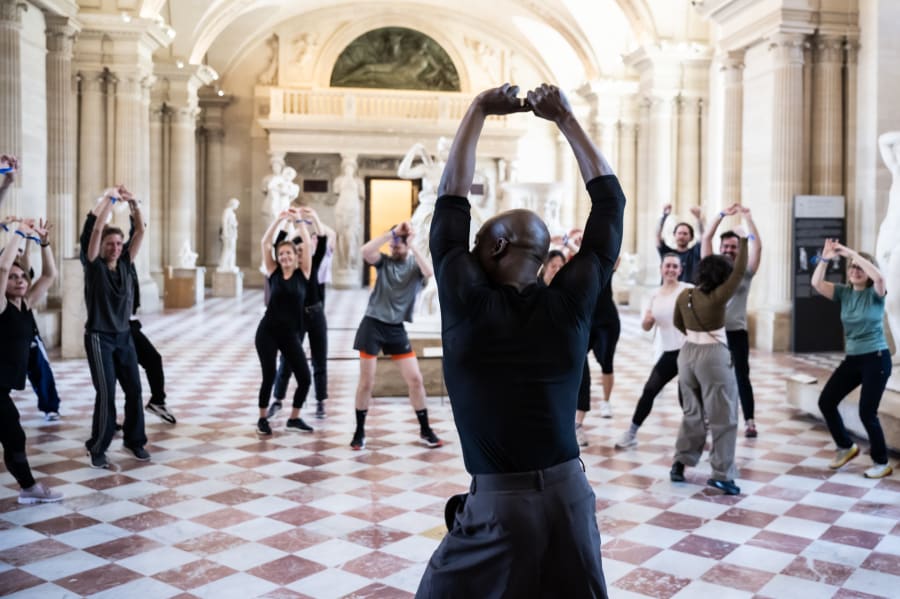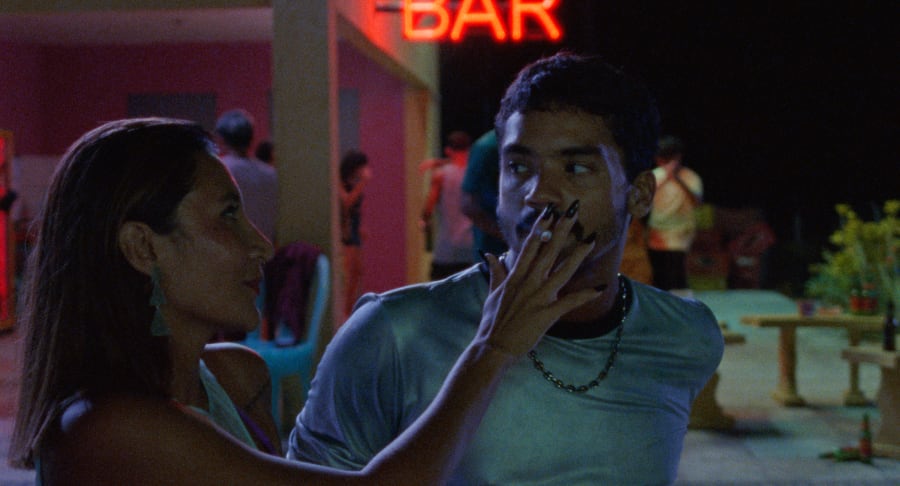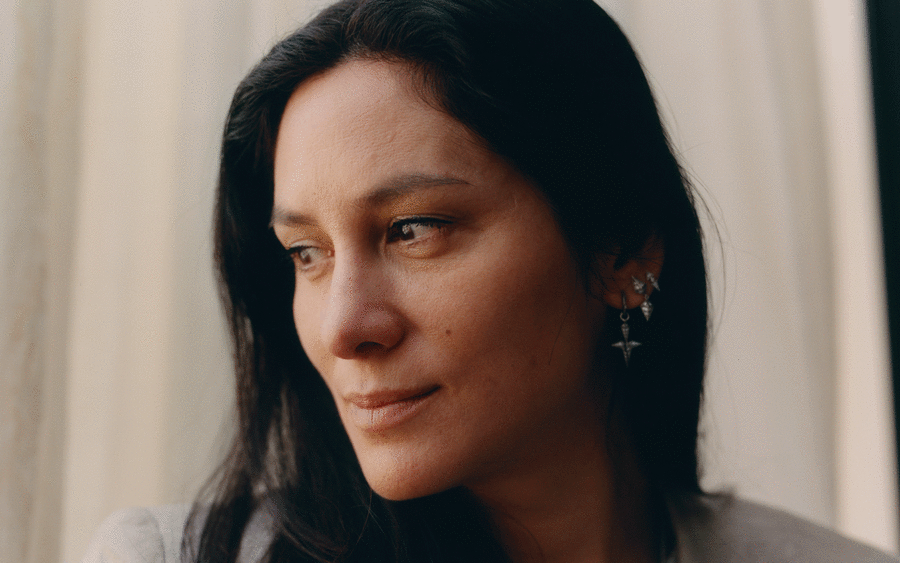When asked what place he would like to visit for the first time, Nicolas Godin answers enthusiastically: the Closerie Falbala (1971-1973) at the Fondation Dubuffet, in Périgny-sur-Yerres, in the Val-de-Marne. And so off we went one day when he was passing through Paris – Air having recently played a concert at Olympia. The iconic French touch group, co-founded with Jean-Benoît Dunckel, shot to fame in 1998 with their first album Moon Safari, and Godin has since released several solo albums as well, including Concrete and Glass (2020).
Passionate about architecture, Godin emphasizes the discipline’s commonality with music in being an ‘enveloping art.’ He spent his childhood in the Parly 2 residential complex, inaugurated in 1969, just outside Versailles: ‘It was a dream society,’ he recalls.
Not far from there, on the Île Saint-Germain, stands the Tour aux figures, a monumental sculpture conceived by Dubuffet. ‘Dubuffet and Vasarely were part of the French zeitgeist in the 1970s, even for those who weren’t immersed in art. And the Tour aux figures was part of the suburban landscape along the waterfront on the way back to Versailles. The factories on Île Seguin stood tall like cathedrals. These things were deeply ingrained in me,’ he continues.
Discovering ‘L’Hourloupe’, the imaginary world conceived by Dubuffet, thus has a reminiscent quality for Godin. And incidentally, one of the characters in Dubuffet’s legendary performance Coucou Bazar (presented in 1973 in New York and Paris, and then in Turin in 1978) is actually named Reminiscence. The artist and first theorist of Art Brut set up his studio in Périgny to work on his sculptures, conserve elements of Coucou Bazar and build the 8-meter-tall Closerie Falbala that sprawls over 1,610 square meters.
The few buildings that compose it don’t look like much from the outside, but as Godin points out all their interest lies inside, in the way light falls on the paintings and models: ‘The misunderstanding with architecture is considering it sculpturally. The Notre-Dame-du-Haut chapel in Ronchamp in Haute-Saône, rebuilt by Le Corbusier in the 1950s, is experienced from the outside, whereas the Sainte-Marie de La Tourette convent (1953) in Éveux in the Rhône, which he also designed, is experienced more from the inside. But the outside only exists because it is an extension of the inside. I tend to see things from the inside. For example, my homage to Le Corbusier [‘Modulor Mix’, on the album Source Lab, 1995] is a sound design intended to inhabit the space within an architecture.’
As Fondation Dubuffet Director Sophie Webel explains, ‘“L’Hourloupe” represents a world in which there are no empty spaces, which takes the place of reality but is not reality and which destabilizes us.’ Dubuffet’s independence, his way of living out ideas, and the depth of his writings fascinate Godin: ‘Seeing his early works, you realize the extent to which he invented a whole world. He is an unclassifiable artist who wanted to find forms without a referent, which I can understand even if it is the opposite of what I do: I only exist through failed copies of works I admire. When I am in my studio, I feel like I am in a forest, that at the end of the path there is a clearing, that that is where the right idea is. You might think that Dubuffet’s art comes from nowhere, but it comes from everything he took out. I find that very encouraging.’ Does he see a musicality in Dubuffet’s forms? ‘I don’t think the arts can be compared. There is something earthy in music that doesn’t exist in the other arts. Music is very mysterious. It is a big mountain, and every day I try to climb a few meters!’
From a footbridge in Périgny, one can see a mass of characters with outlines drawn in black and brightened by the four colors of Bic pens. Dubuffet created the first ones from doodles made while on the telephone. There are somewhere around a hundred of them, ranging from human-sized to much larger. From costumes worn by humans to ‘practicables’ on wheels, they all have names: Marie Tremblote, Cambriolus, le Patibulaire…These characters are the actors in Coucou Bazar. ‘Dubuffet, like Balzac, invented a family, with proper names. His titles are perfect for each. In music, it is always very difficult to find titles. It is the same with the image for an album cover, which has a huge influence on the way you listen to it,’ comments Godin.
In the absence of actors and the music that Dubuffet commissioned Ilhan Mimaroglu to compose, a system of motors sets this material, both pictorial and sculptural, in motion. A small screen displays the wavering image of a recreation of the performance and allows viewers to see the works in movement. These images bring to mind the slowness of Kabuki theater for Godin, who has often combined his own music with other artforms: for the French artist Xavier Veilhan’s ‘Studio Venezia’, presented at the 2017 Venice Biennale; ballets by Angelin Preljocaj; Alessandro Baricco’s book/album City Reading (2003); and fashion shows by Azzedine Alaïa. Recalling the theme song at the end of the television show Apostrophes (1975–90) he says: ‘You would see the guests turn off their mics and start talking amongst themselves, and I was dying to know what they were saying. I always thought of music as a little spaceship that would allow me to go anywhere. I would have loved to do the music for Coucou Bazar.’
After leaving behind the resin models for Salon d’été (designed in 1974, but never completed), Site scripturaire (designed 1973, never realized) and Jardin d’émail (1974, sculpture installed at the Kröller-Müller Museum in Otterlo, the Netherlands), we head outside to the Closerie Falbala. Stepping into it is a bit like walking out onto the moon, especially in bright sunlight. Dubuffet completed it in 1973 to house his Cabinet logologique (1967-1969), as a place for meditation. We stroll around the Villa Falbala, into the crevices of this white planet, which we can tell is also fragile – it is in the process of being cleaned. ‘It reminds me of the Musée des Plans-Reliefs at Invalides: the objects there look like children’s games, but they are used in war. Here, whenever there is a relief, Dubuffet marks it with a black line, like topographical curves,’ Godin adds as he notes the caretaker’s house perched on a nearby hill. He concludes: ‘If extraterrestrials were to arrive in Périgny 500 years from now, they would think it was the tomb of the emperor of the world, surrounded by his soldiers like the terracotta army of China’s first emperor…’
Anaël Pigeat is an art critic, editor-at-large of The Art Newspaper, journalist for Paris Match, and curator.
English translation: Jacob Bromberg.
All photographs by Pauline Gouablin for Art Basel.
Published on May 22, 2024.


